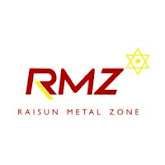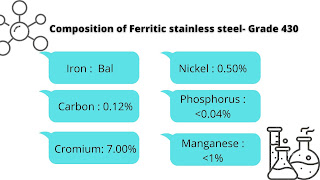Types of Stainless steel finishes
Types of Stainless steel finishes
Raisun metal's Stainless steel rolled finishes provide both aesthetic and functional advantages for all types of stainless steel applications. These unique steel finishes are available in course, flat, reflective, and non-reflective options, providing enhanced metal protection and lasting visual allure. Whether you’re looking for a stainless steel finish that protects or enhances the stainless steel’s visual appeal, there are several options available that deliver the results you need.
No1
Hot rolled annealed, shot blasted and pickled.
2B
Cold rolled annealed and pickled and skin passed.
BA
Bright annealed finish: processed with bright heat treatment after cold rolling
No.3
Cold rolled annealed and pickled and polished with 100 to 120 grit.
No.4
Cold rolled annealed and pickled and polished with 150 to 180 grit.
Scotch bright
Very fine hairline finish generated by polishing with rolls made out of scotch bright material.
Hairline
hairline finish has long, continuous and uni-directional grind marks parallel to the longitude of the panel.
Bead blast
This finish results in a non-directional textured surface with a soft satin reflection and low reflectivity. This finish has an aesthetic appeal and enhances the surface properties of stainless steel.
No.8/ mirror
Cold rolled annealed and pickled and polished to mirror finish.
Etching
Cold rolled annealed and pickled and pattern surface.
2E
Cold rolled, heat treated, mechanically descaled and pickled.
No.1 Finish
Plate is hot rolled, annealed, pickled and passivated. This results in a dull, slightly rough surface; quite suitable for industrial applications which generally involve the range of plate thicknesses. Grinding marks may be visible in isolated areas.
Some of the thinner thicknesses within the plate range are Cold Rolled; but Sheet, Coil and Strip gauges are produced by Cold Rolling, ie rolled without and heating of the material. Cold Rolling hardens the material, and the thinner sizes may have to be subjected to an intermediate anneal and pickle, or bright annealed, during the reduction of thickness to final gauge.
The starting material for Cold Rolling always has a No. 1 finish. Cold Rolled material is supplied with the following standard mill finishes.
No.2B Finish matt
This is more commonly referred to as a BRIGHT ANNEALED (BA) FINISH. Material with a No. 1 finish is Cold Rolled using highly polished rolls in contact with the steel surface. This smooths and brightens the surface.
The smoothness and reflectiveness of the surface improves as the material is rolled to thinner and thinner sizes. Any annealing which needs to be done in order to effect the required reduction in gauge, and the final anneal, is effected in a very closely controlled inert atmosphere. No oxidation or scaling of the surface therefore occurs and there is no need for additional pickling and passivating.
Much of the 2B Finish sheet imported is not a true 2B Finish. Mills which operate bright annealing facilities will often carry out all the annealing operations of Cold Rolled material in such facilities. This leads to a superior "2B" finish as no oxidation or scaling takes place during the annealing operation, even though the actual rolling may be effected on polished rolls as for normal 2B Finish, but not highly polished as would be needed to produce a BA finish.
The following finishes are all mechanically produced polished finishes. As well as being standard mill finishes, they are also applied to stainless steel sections and components to meet the required aesthetic criteria. It should be appreciated that factors such as hand polishing vs. mechanical polishing; polishing a flat product as against a component of complex shape; thickness and composition of material can affect the visual appearance of the final surface.
No.3 Finish
No. 3 finish is characterized by short, relatively coarse, parallel polishing lines. It is obtained by either mechanically polishing with gradually finer abrasives or by passing the coil through special rolls, which press a pattern into the surface, simulating the appearance of mechanical abrasion. It is a moderately reflective finish.
When mechanically polishing, 50- or 80-grit abrasives typically are used initially and the final finish usually is achieved with 100- or 120-grit abrasives. The surface roughness typically has a roughness average (Ra) of 40 micro inches or less. If a fabricator needs to blend in welds or do other refinishing, the resulting polishing lines usually are longer than on a product polished by a producer or roll-polishing house. A No. 3 finish is most seen in brewery equipment, food processing equipment, kitchen equipment, and scientific apparatuses.
No. 4 Brushed Finish (https://vizinox.com/no-4.html)
Like No. 3 finishes, No. 4 finishes are also characterized by short, uniform parallel polishing lines on the stainless steel sheet surface finish chart. They typically require a No. 3 finish with gradually finer abrasives. This final finish can end anywhere between 150- and 320-grit. Typically, as the grit number increases, polishing lines are finer and the reflective finish is greater. No. 4 finishes show an Ra of 25 micro-inches or less with a highly reflective finish. Similar to No. 3 finishes, No. 4 finishes are used for general purposes. The uses for No. 4 finishes are similar as well, as No. 4 finishes are widely used for kitchen and restaurant equipment, food processing, dairy equipment, hospital surfaces, highway tank trailers, control panels, and water fountains.
Hairline Finish (https://vizinox.com/hl-finish.html)
Hairline Finish Stainless Steel Sheets have a variety of applications and are an indispensable part of manufacturing companies. Metalex has installed best in class equipment for Stainless Steel Surface Finishing to ensure quality second to none. The Hairline Finish Stainless Steel Sheets offered by us are non reflective in nature and can absorb the surrounding colors and light hence highly advantageous. These stainless steel sheets can be used for different applications like interior cladding, escalator, building facades and many more. We offer these Hairline Finish Stainless Steel Sheets in different sizes based on the requirements of our clients.
Hairline Finish and No. 4
- Short grit finish is called No. 4 or Satin.
- Long grit finish is called Hairline.
- Thickness 0.8 to 3.00mm x 1250mm width x 500 to 4000mm length” to “Thickness 0.8 to 3.00mm. Width upto 1250mm. Length: 500 to 4000mm.
- Application of Hairline Finish Stainless Steel Sheets: Widely used in Architectural and Elevator industry.
Scotch Brite Finish (https://vizinox.com/sb-finish.html)
SS Scotch Brite Finish sheets are standardized. The Scotch Brite Finish sheets are professionally monitored under a strict technical observation and produced with utmost superior quality and excellence in design. It's a semi-dull finish with uniform grains, which is obtained using finer abrasives. With a low level of reflectivity and unidirectional texture, this finish has smooth, soft and exquisite grains.
Application of Scotch Brite Finish Stainless Steel Sheets
Beadblasting Finish
This finish is achieved using fine abrasives which are fired at the stainless steel in a stream of compressed air. This achieves a uniform, matt grey finish on components and fabricated parts such as castings. It can also be used selectively for decorative purposes
Simply referred to as uniform matte finish of sheet surface with micro pits
They are Finishes with low reflectivity and no directionality are obtained by bead blasting and contrast well visually when adjacent to polished stainless steel.
The texture of the surface varies with the bead materials.
Applications
Interior decorations
Claddings
Used mainly where reflectivity is not required
Etching Finish
Stainless steel etched components are very easy to manufacture with chemical etching because the chemical composition of stainless steel is resistant to corrosion, the acid used in the etching process will not affect the metal's properties. The part surface remains smooth while part features are etched with high precision and low tolerances.
What differentiates stainless steel from other types of steel? The metal alloy must have at least 10.5% chromium. Chromium when exposed to oxygen creates a surface oxide that makes it stronger and corrosion-resistant. Moreover, cold rolling stainless steel further increases strength and gives it a smooth shiny surface. Stainless steel is popular in many types of industrial components for a variety of reasons.
- Aesthetics - Acid etching stainless steel does not alter the natural aesthetic look and maintains a smooth scratch-free surface. This feature is especially desirable for parts such as nameplates, speaker grills, and other types of vehicle inlays.
- High Strength - With the addition of Nickel and cold working, stainless steel increases in strength. Aerospace and vehicle components will be able to withstand force and resist structural fatigue.
- Ductile and Formable - Stainless steel grades with a nickel content also make it easier to bend; great for contacts and board level shielding.
- Excellent Weldability
- Resistant to High and Low Temperatures - This is a necessary feature for the high performance in machine and vehicle parts exposed to temperature changes.
- Recyclable - At the end of a product's life cycle, stainless steel parts can be recycled to help keep costs low.
Bright annealed Finish
A bright annealed finish is produced by heat-treating (annealing) in a controlled atmosphere furnace. It has a bright, reflective appearance, but may have some cloudiness and other imperfections. This particular finish is most often applied to stainless steel and viewed as a lower cost alternative to buffed. The purpose of a bright annealing furnace is to heat the finished product of stainless steel under protective atmosphere. According to the requirements of the application performance, the requirements of the microstructure of the annealed stainless steel are different, so the processing technology of the stainless steel with bright heat treatment is different. Process of 300 austenitic stainless steel heat treatment process is a typical solution treatment, in the heating process will dissolve in austenite carbide, heated to 1050 to 1150 DEG C after appropriate heat preservation for a short period of time, can make the carbide completely dissolved in austenite, and then rapidly cooled to 350 DEG C to get under the supersaturated solid solution is uniform one-way austenite. Generally, bright annealing is the heat treatment of stainless steel strip under H2 protective atmosphere. And stainless steel processing technology to meet the requirements of BA panels, we must strictly control the bright furnace protection atmosphere, purity, shall avoid oxidation.
No 8 mirror Finish (https://vizinox.com/mirroor.html)
Surface chromium has been lost during the previous processing steps, and, without removal of the scale, the stainless steel would not provide the expected level of corrosion resistance. Chemical removal of this scale is called pickling or descaling, and it is the final processing step. A No. 4 finish has rough, dull, and non-uniform appearance. There may be shiny spots were surface imperfections were removed by grinding. It is generally used in industrial applications, such as equipment for elevated temperature service.
Stainless steel also known as inox steel, is a steel alloy with a minimum of 10.5 or 11% chromium content by mass.
No 8 mirror finish does not stain, corrode, or rust as easily as ordinary steel, but it is not stain-proof.
The term 'corrosion resistant steel' is used when the alloy has less than the 12% minimum of chromium, for example in the aviation industry. There are different grades and surface finishes of stainless steel, depending on where it will be used. Stainless steels have a higher resistance to oxidation (rust) and corrosion in many natural and man-made environments; however, it is important to select the correct type of stainless steel for the use. There are over 150 grades of stainless steel, of which fifteen are the most used.
If you require stainless steel for whatever reason then contact Raisun Metal Zone Pvt. Ltd. https://www.raisunmetals.com/ or vizinox.com We are the manufacturer of stainless steel sheets and coils. we believe in quality service as well as a brilliant service to our customers.
Get in touch
Facebook :https://www.facebook.com/raisun.metals.5
Linkedin : https://www.linkedin.com/company/raisun-polywires-private-limited/
Youtube : https://youtube.com/channel/UCPaUVsNm-t4_sjfbffxf5Nw



Comments
Post a Comment